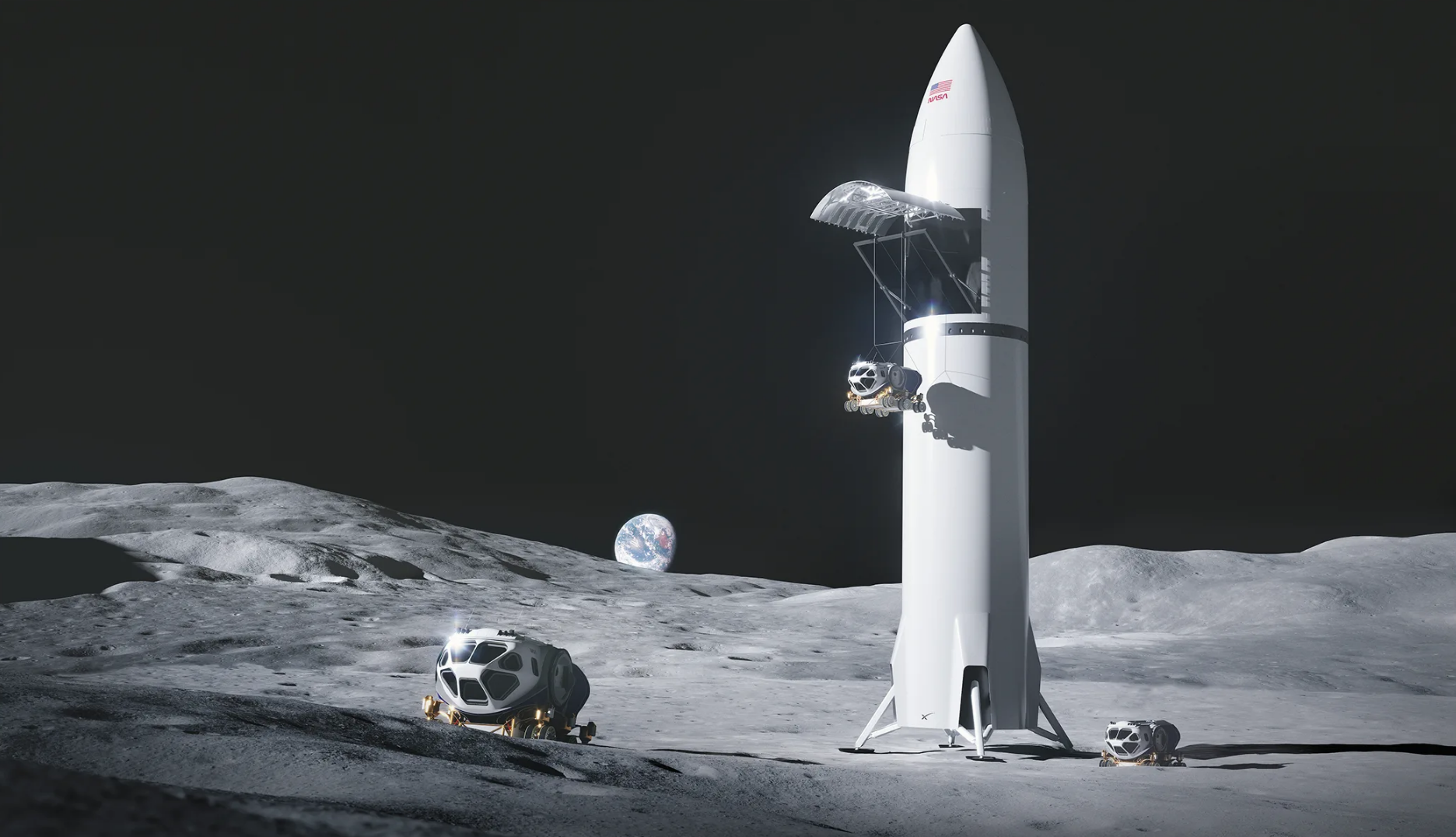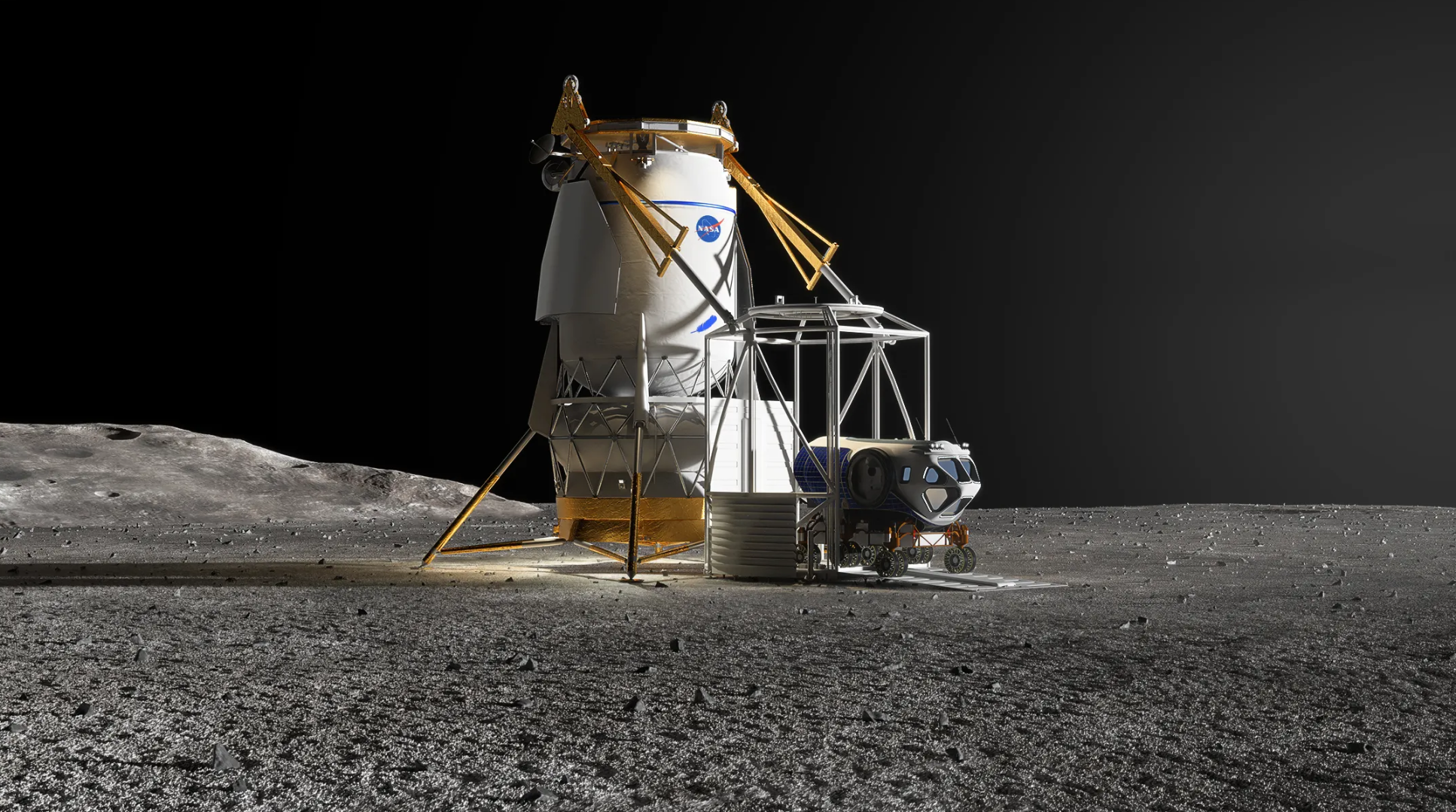NASA is actively preparing to land on the moon as part of the Artemis project. As early as 2026, we can witness the landing on our natural moon during the manned flight of Artemis III. Moreover, the landing will be carried out with the help of a private spacecraft, which is being built by SpaceX. The Space Agency has shown an illustration of how the historic Artemis III mission will take place. This event will be an outstanding historical return of humanity to the moon after more than half a century after the Apollo program.

According to NASA’s plans, after the successful return of humans to the Moon, in about five years, the space agency, together with SpaceX and Jeff Bezos’s Blue Origin company, plans to send the first cargo spacecraft to our moon. This will happen during the Artemis VII mission, which is scheduled for 2031 – it has already been planned and has entered the preparation stage. The newly released images show the Blue Origin cargo spacecraft and the SpaceX Starship, which lowers the rover to the surface of the Moon using an external elevator.
Although the plans sound exciting, it must be taken into account that NASA and its partners still have a lot of work to do before these plans become a reality. NASA has asked SpaceX and Blue Origin to modify their manned lunar spacecraft with cargo versions, which are currently being developed for Artemis III, IV and V. These variants should deliver cargo to the moon. It is expected that these cargo variants will be able to carry 12-15 tons of payload and will not be put into operation before the Artemis VII mission.

Rugged wheeled rovers will play an important role in exploring the moon and establishing a permanent base on it. It is necessary to be able to deliver not only people to the Moon, but also large equipment for scientific research.
Changes to existing lunar vehicles, in particular adjustments to payload interfaces and deployment mechanisms, will be carried out within the framework of existing contracts. New variants of cargo spacecraft will not include life support systems for humans, which will give more opportunities for modifications.
But there are still serious obstacles on the way to the realization of such fantastic plans. NASA is finding it increasingly difficult to get budgets to finance new space missions and support old ones. SpaceX still has not successfully launched and landed a Starship rocket, and Blue Origin has not yet launched any of its spacecraft into orbit.
Earlier, we reported on how NASA demanded to create a new generation lunar rover in just 12 months.
According to nasa.gov
Follow us on Twitter to get the most interesting space news in time
https://twitter.com/ust_magazine


